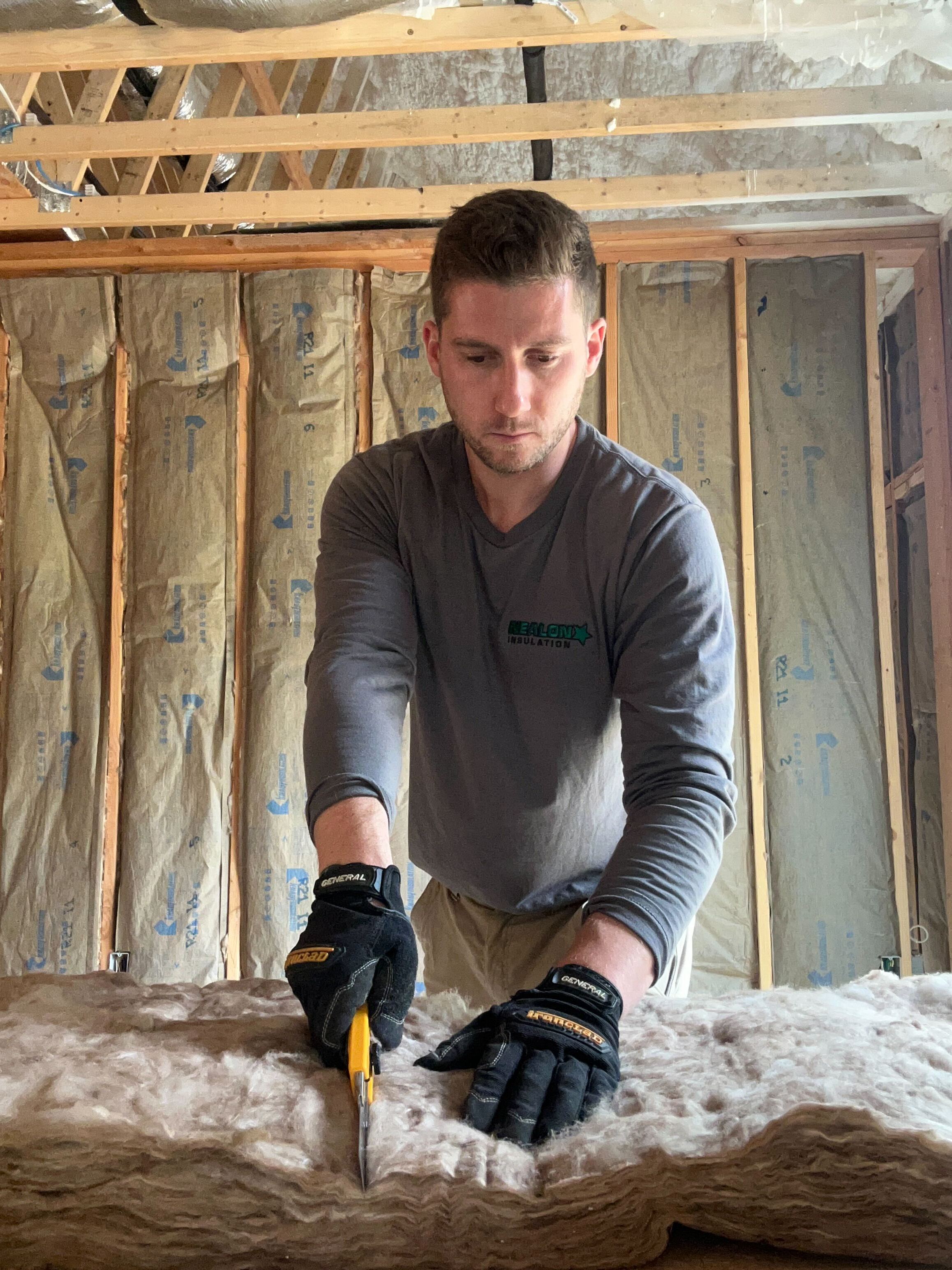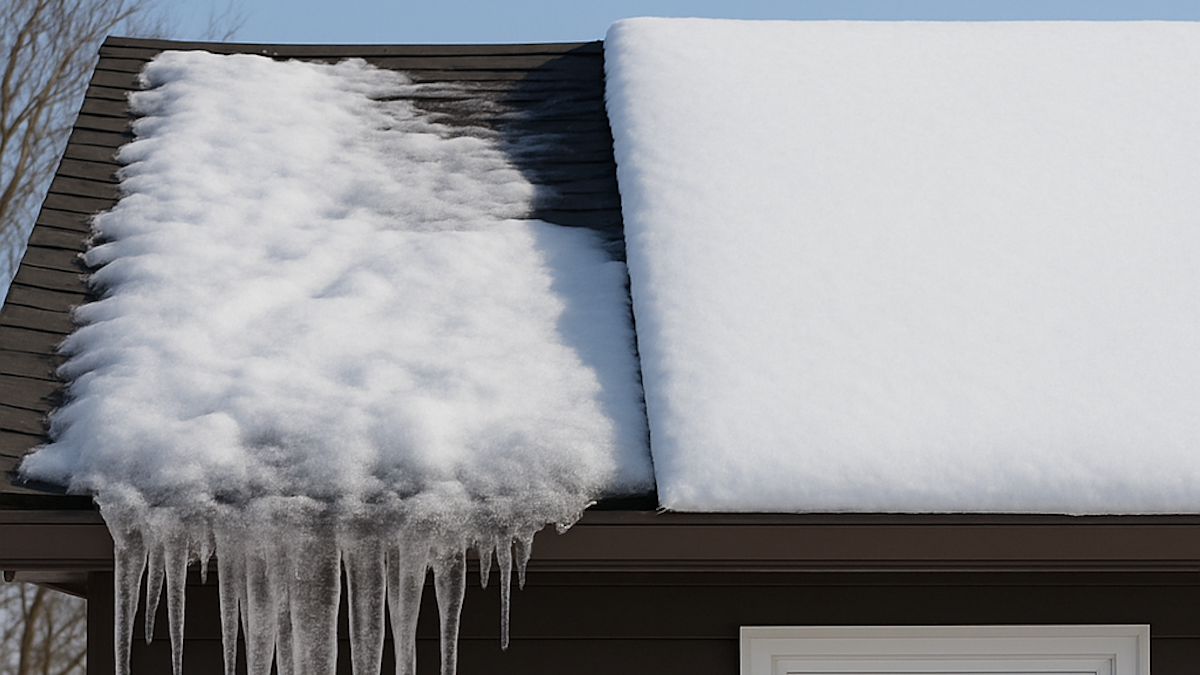What’s the Best Insulation Material for Your Roof?

If you’re asking about the best insulation for your roof, you’re already ahead of the game. Most heat loss in homes happens up top—through the attic, the rafters, and the roof deck. The right insulation up there makes a big difference in comfort, efficiency, and long-term costs. But as with most things in homebuilding, there’s no one-size-fits-all answer. It depends on your goals, your budget, and your home’s construction.
Let’s break down a few of the top contenders but first...
How Much Roof Insulation Do You Actually Need?
Choosing the type of insulation is step one. But step two—the amount—is just as important. In Connecticut, the recommended R-value for attic insulation is R-49 to R-60. That’s a lot more than the pink fluff you might have seen in a 1970s ranch.
Here’s what that looks like in practice:
- Fiberglass batts: ~16–20 inches for R-49
- Blown-in cellulose: ~13–17 inches for R-49
- Closed-cell spray foam: ~7–9 inches for R-49 (thanks to its higher R-value per inch)
Undershooting the R-value means your roof is still bleeding heat in the winter and baking you in the summer. Overshooting it? Not usually a problem, unless you’re tight on space or budget.
And Don’t Forget the Air Sealing
Insulation slows heat transfer, but air leaks are a different beast. Warm air loves to escape through attic bypasses—like around chimneys, recessed lights, and bathroom fans. If you skip air sealing, even the best insulation won’t perform like it should.
Before any insulation gets added, a smart contractor will:
- Seal top plates, wiring holes, and plumbing penetrations
- Check for ventilation imbalances (which can cause moisture buildup)
- Use foam or caulk to close up big gaps
Air sealing + insulation = a much tighter, more efficient building envelope. Without it, you’re leaving comfort (and money) on the table.
Fiberglass Batts
Best for: Budget-friendly attic floor insulation
Fiberglass is a classic for a reason. It’s affordable, widely available, and easy to install between attic floor joists. If you’re insulating an unfinished attic (meaning no HVAC or living space up there), fiberglass batts laid on the floor can be a great option. Just watch for gaps and compression—proper installation matters.
Blown-In Cellulose
Best for: Dense coverage with recycled content
Made from recycled paper and treated for fire resistance, blown-in cellulose is great for getting into every nook and cranny of your attic floor. It offers excellent coverage and performance, especially in irregularly shaped spaces. It also has solid R-value per inch and tends to be more airtight than fiberglass.
Spray Foam
Best for: Insulating the roof deck and creating a conditioned attic
If you have ductwork, HVAC equipment, or a finished attic up top, spray foam is hard to beat. It’s applied directly to the underside of the roof sheathing, creating a thermal and air barrier in one step. Closed-cell spray foam also adds some structural strength and moisture resistance. It’s the priciest option, but it can dramatically improve efficiency in the right home.
Rigid Foam Board
Best for: Tight spaces and high R-values
Rigid foam boards (like polyiso or XPS) offer high R-value per inch and are often used in cathedral ceilings or under roofing materials. They require careful sealing at the seams to prevent air leaks but can be a great solution where space is limited or where continuous insulation is needed.
So Which One Is Right for You?
Here’s a quick cheat sheet:
- You’ve got an unfinished attic and a tight budget: Go with fiberglass batts or blown-in cellulose.
- You want high performance and have HVAC equipment in the attic: Closed-cell spray foam is your best bet.
- You have a cathedral ceiling or limited space: Consider rigid foam board for its high R-value in a thin profile.
- You want eco-friendly materials: Blown-in cellulose wins for recycled content and low environmental impact.
Common Roof Insulation FAQ's
Can roof insulation improve indoor air quality?
Yes, roof insulation can improve indoor air quality—especially when paired with air sealing. It reduces air leaks that bring in dust, allergens, and moisture. Materials like spray foam or dense-pack cellulose help block pollutants and create a healthier, more stable indoor environment.
Can I insulate my roof from the outside during a re-roofing project?
What’s the difference between insulating the attic floor and the roof deck?Insulating the attic floor keeps your attic cold in winter and hot in summer. That’s fine if it’s an unconditioned space. Insulating the roof deck, on the other hand, turns the attic into a conditioned space, ideal if you’ve got ductwork, HVAC equipment, or a finished attic. It’s a big performance upgrade—but also a bigger investment.
What’s the difference between insulating the attic floor and the roof deck?
The main difference between insulating the attic floor and the roof deck is that floor insulation keeps the attic unconditioned, while roof deck insulation creates a conditioned attic. Use attic floor insulation for unused attics, and roof deck insulation if the space is finished or contains HVAC equipment.
Will better roof insulation help with ice dams?
Yes, better roof insulation helps prevent ice dams by keeping warm air from leaking into the attic. This stops uneven roof melting that refreezes at the eaves. Pairing insulation with air sealing and proper attic ventilation keeps roof temperatures consistent and reduces the risk of ice dams forming.
Final Thought
Roof insulation isn’t a glamor topic, but it pays dividends every month on your energy bill. Picking the right material isn’t about what’s most expensive—it’s about what fits your house and how you live in it.
Related Articles
Let's Work Together
Ready to transform your home into an energy-efficient haven? Schedule your free energy assessment today and experience the Nealon difference for yourself.



